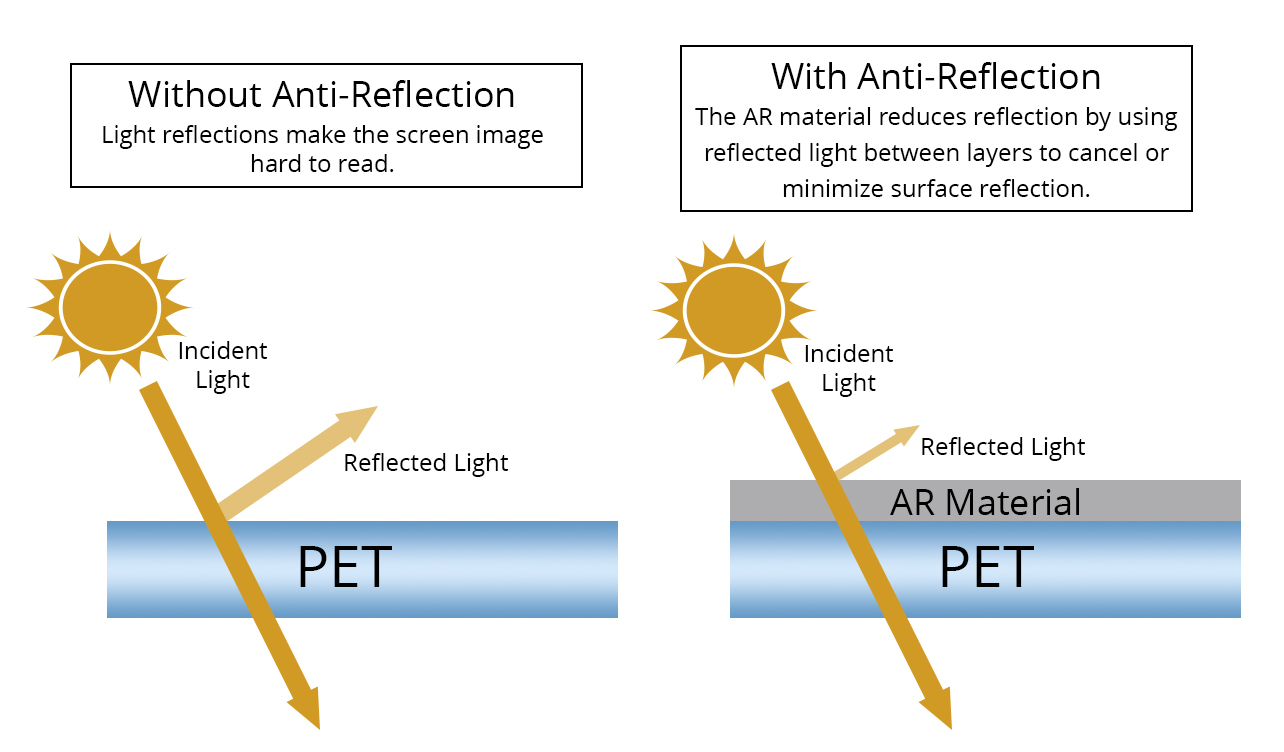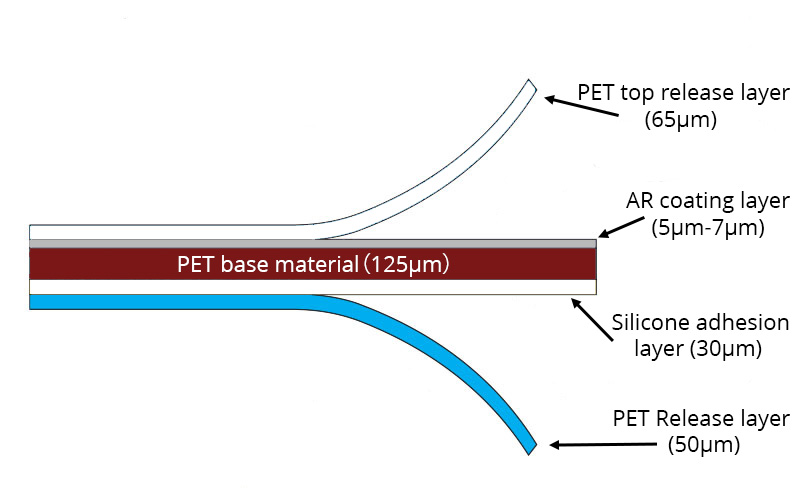Anti-Reflective Screen Protectors
What are the differences between Anti-Reflective (AR) screen protectors and Anti-Glare (AG) screen protectors?
AR and AG screen protectors are often confused with each other because they perform similar tasks of reducing the amount of glare and reflection.
However, there are differences between the two coatings and specific scenarios where each is more suitable.
- AR is a glossy material that reduces ambient reflections by bending light through the AR coating, which cancels out some reflections. Because AR material provides a crystal-clear image in most situations, it is more effective at enhancing display readability without affecting the screen image. AR material provides whiter whites and blacker blacks, thus improving contrast for reading the screen text or image. The silicone layer has a strong adsorption force on the screen glass and facilitates fast air bubble removal, and the fine particle bubbles can be removed by lightly pressing with fingers. It is a premium material, thereby costing more than AG screen protector options.
- AG is a matte material that improves readability when viewed straight on in bright environments by roughening the display surface. However, the matte finish will gray out when viewed from a side angle in the same bright lighting situations.
How does Anti-Reflective (AR) material work?
AR screen protectors, like AG screen protectors, are used in brightly lit ambient conditions to increase the readability of the device to which they are applied.
AR Screen Protector Uses:
AR screen protectors are mainly used on automobiles, notebook computers, folding mobile phones, tablets, industrial control boards, and consumer electronics.

*Please note that these coatings have advantages and disadvantages, and their suitability depends on specific use cases.
AR technical details:
AR screen protector material is glossy (no matte finish) and reduces surface reflections using refraction between its layers, similarly to how eyeglasses use AR coatings to reduce reflections. The added micro coating layer of 5-7 µm, half the thickness of plastic cling wrap (1µm = .001mm), is applied to the top surface of the base polyethylene terephthalate (PET) screen protector layer.
The AR coating is of a calibrated thickness so that when light travels throughout the AR layer and reaches the top of the PET layer, the reflection of the top surface is reduced by the reflection of the light being reflected off the surface of the PET layer. This light cancellation process varies depending on the angle of the ambient light and the viewer's position.
AR screen protectors increase screen readability, unlike AG screen protectors that depend on a roughened top surface to scatter ambient light and slightly blur the screen text or image. However, AG screen protectors are more economical to manufacture. AR screen protectors are used anywhere that screen resolution is important, or if you simply want the clearest image from your display.
ARC Screen Protector Material Structure

ARC Specification Sheet
